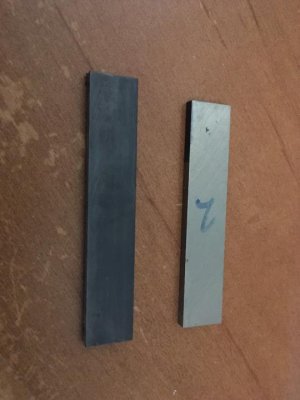moshuajusic
New member
I found a humbucker pickup magnet in the drawer. No recollection of where it came from. It's probably A5 or ceramic. Any way to determine magnet type before installing? It's dark grey, with white paint (or marker?) on one of the long edges, and what looks to be a small, faint blotch of the same white paint on one of the wide surfaces.

